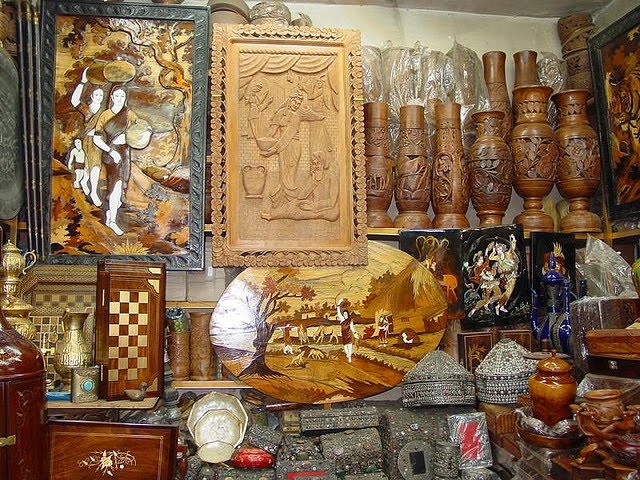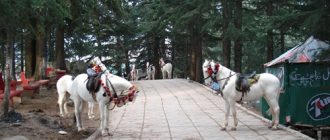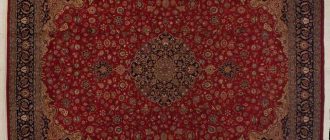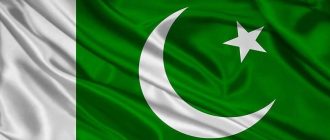Would you like to know about Pakistani handicrafts? Then read our guide for more facts and information…
Pakistani handicrafts are made in the remote and rural areas of the country but are sold in many markets across the country. They bring a cultural and historical touch to any space where they are used or decorated. The handicrafts are colorful and showcase the traditional heritage of Pakistan.
Pakistani handicrafts are admired and appreciated by foreigners, tourists as well as locals alike. The foreigners visiting the country buy kitchen items, boxes, tables, cupboards as well as carved furniture items. In addition the different types are exported worldwide which are bought as souvenirs for tourists and gifts for those living away from home.
History of Pakistani Handicrafts
The rich history of Pakistani handicrafts is over 7000 years old evolving over the years yet the legacy of the culture has been preserved through the style and designing of the products.
The different regions bring their own flavor through the differences in customs, folklore, dress and dialect which come through in the designing of the handicrafts. These differences bring something new from each city and province for example Peshawar is known for its craftsmanship in shoe ware, Sindh and Balochistan are known for embroidery work and Multan for camel skin lamps.
Types of Pakistani Handicrafts
Pakistani handicrafts come in many different styles, materials and colors. The materials used for the handicrafts include camel skin, ivory, wood, marble and cane-basket work.
Brassware
Brassware handicrafts consist of decorated plates, bowls, vases and other utensils which are inspired by the Mughal era of the Indian subcontinent. The handicrafts come on artistic and color patterns which have a brass polish. The brass utensils were once a part of the daily household use in homes but the trend has worn out due to their high cost. One of the famous markets for brassware is in Peshawar known as ‘Misgaran Bazaar’ i.e. bazaar of brass workers. The locals buy brassware for household use and to decorate their homes.
Silver ware
Silver ware crafts are known for attractive designs and intricate craftsmanship yet due to their high prices the silver ware does not fit every buyer’s budget. They are found in many cities across the country and are available on order and can be made according to ones preferences.
Carved handicrafts
One of the most prized handicrafts are those carved in wood with ivory which require a lot of patience and specialized skills in carving. These skills are generally passed down by forefathers of the artisans.
The carved furniture pieces come in rich designs and are made from high quality wood which are exported across the globe. The most popular ones are carved furniture pieces which are bought as complete sets as well as individual furniture pieces to add the traditional Pakistani touch to any space.
Carpets and Textile
Pakistani carpets and rugs date back to many decades as carpet making is an ingrained tradition in the country. The woolen carpets represent historical designs inspired from the Mughal era as well as inspiration from Islamic art. The knotted carpets are found across the country and exported worldwide due to their fine quality.
The textile industry contributes heavily to the country’s GDP for years and continues to grow. Popular products include embroidered bedspreads, shawls and curtains with mirror work.
Pottery work
Pottery work in Pakistan belongs to every village’s crafts history particularly in Multan which is famous for its blue pottery which dates back to the 13th century. The oldest forms are ceramics and glazed while the most popular techniques used today include engraved designs on pottery with transparent glazes.
The pottery work continues to remain traditional, not influenced by the modernistic designs. Pakistani potters are known for their intricate tile decoration on mosques and buildings.
Pakistani Furniture
The furniture pieces are known for the intricate designs and refined quality. One of the reasons for this recognition is the wood called ‘Shesham’ by the locals which is a wood with apparent solid cross grains. Shesham comes from trees over 60 years old and is found in the dense jungles, lakes and rivers of northern Pakistan. Shesham furniture is loved across the globe for its uniqueness and beauty.
Pakistani Jewelry and Basketry
Silver and gold is used for jewelry with precious stones as well as for kitchen utensils, boxes, frames, swords etc. The jewelry items include necklaces, rings, bracelets, earrings as well as ornaments for the hair, forehead, nose and ankles.
Basketry is an important component of the Pakistani handicrafts industry. It includes cane woven into handbags, baskets, mats, sofas, shelves as well as hangings. The craftsmen make colorful and intricate designs with floral patterns in Sindh while in the Northern region geometrical patterns are preferred. The tourists’ are sure to pick up the handicrafts made of crane from their nearest markets and hill stations.
Embroidery work
One of the most sought after craft is embroidery work due to its beauty and close relation with the textile industry. Pakistani men and women are able to make the cross stitch which requires considerable skill and effort. The famous Pakistani embroidery work includes pearl work and ‘Salma Sitara’ which is uses shiny silver and gold lace to create beautiful patterns.
The mirror and embroidery work can be found on clothes, handbags, cushions among other things. Mirror work on clothing is known as ‘Kadhai’ whereas the ‘Patti’ is from Chitral which is woven on handlooms.
Pakistani handicrafts represent the heritage, traditions and skills of the Pakistani people. They bring the country together by using regional styles and skills which are presented to the world in the most unique manner.





